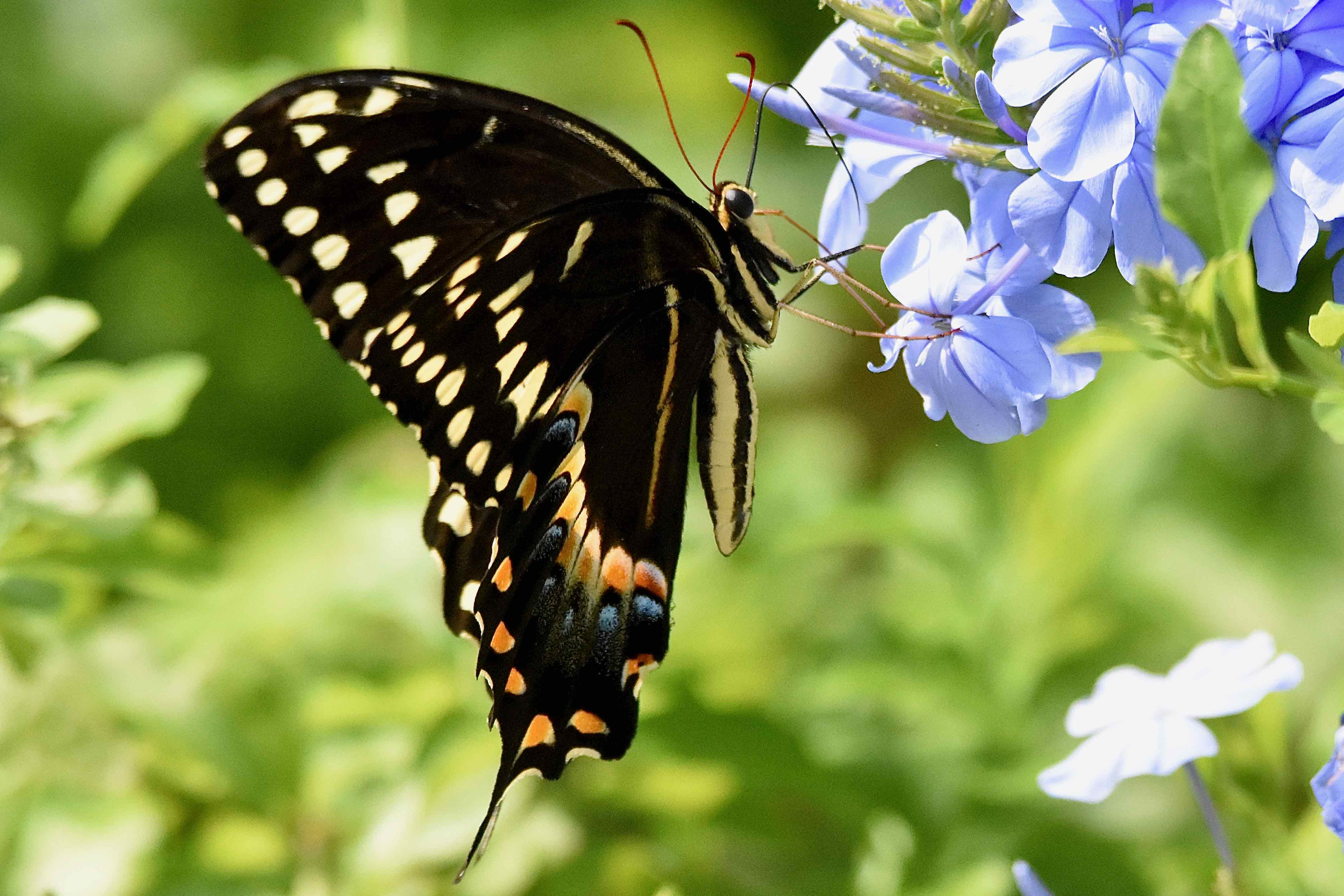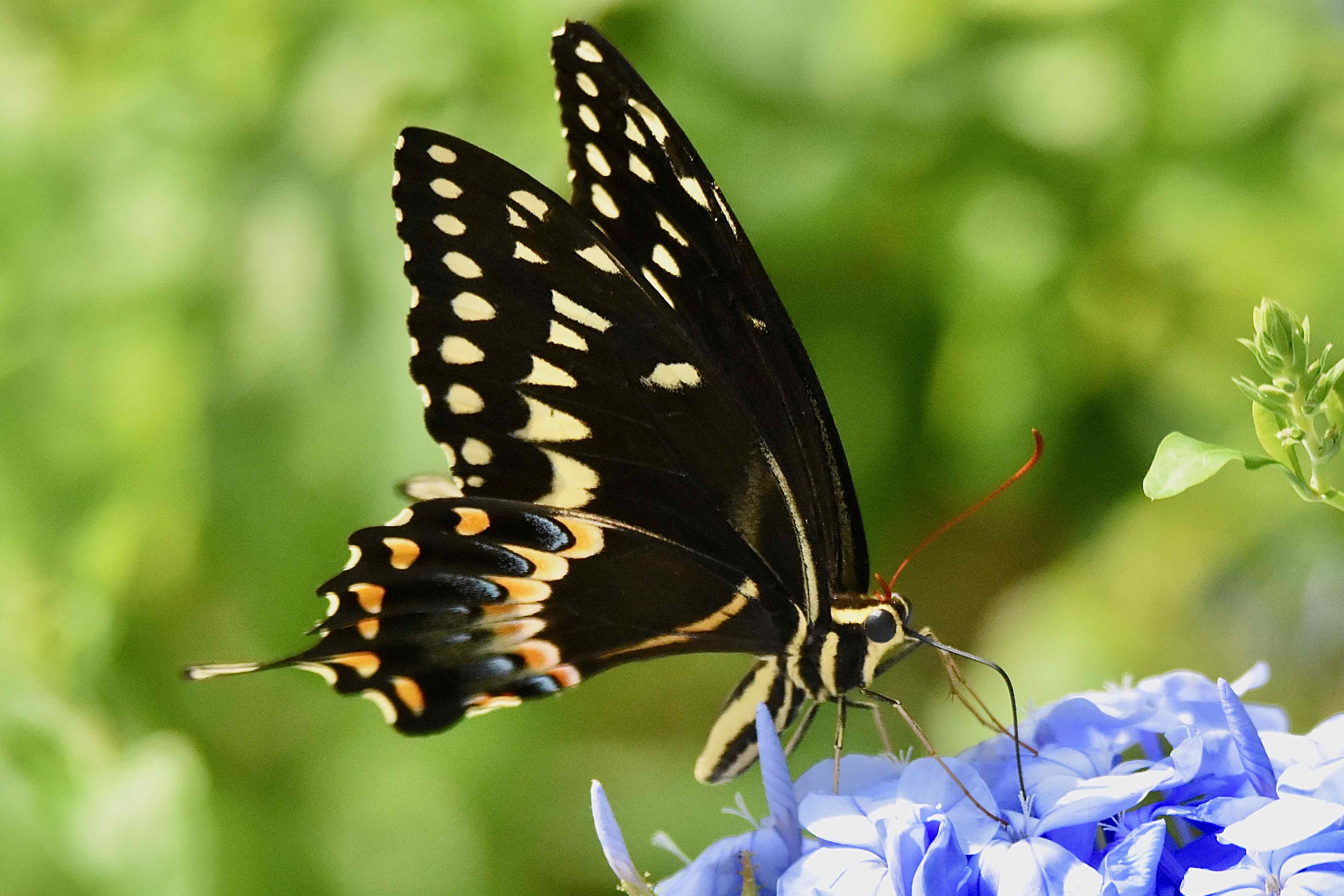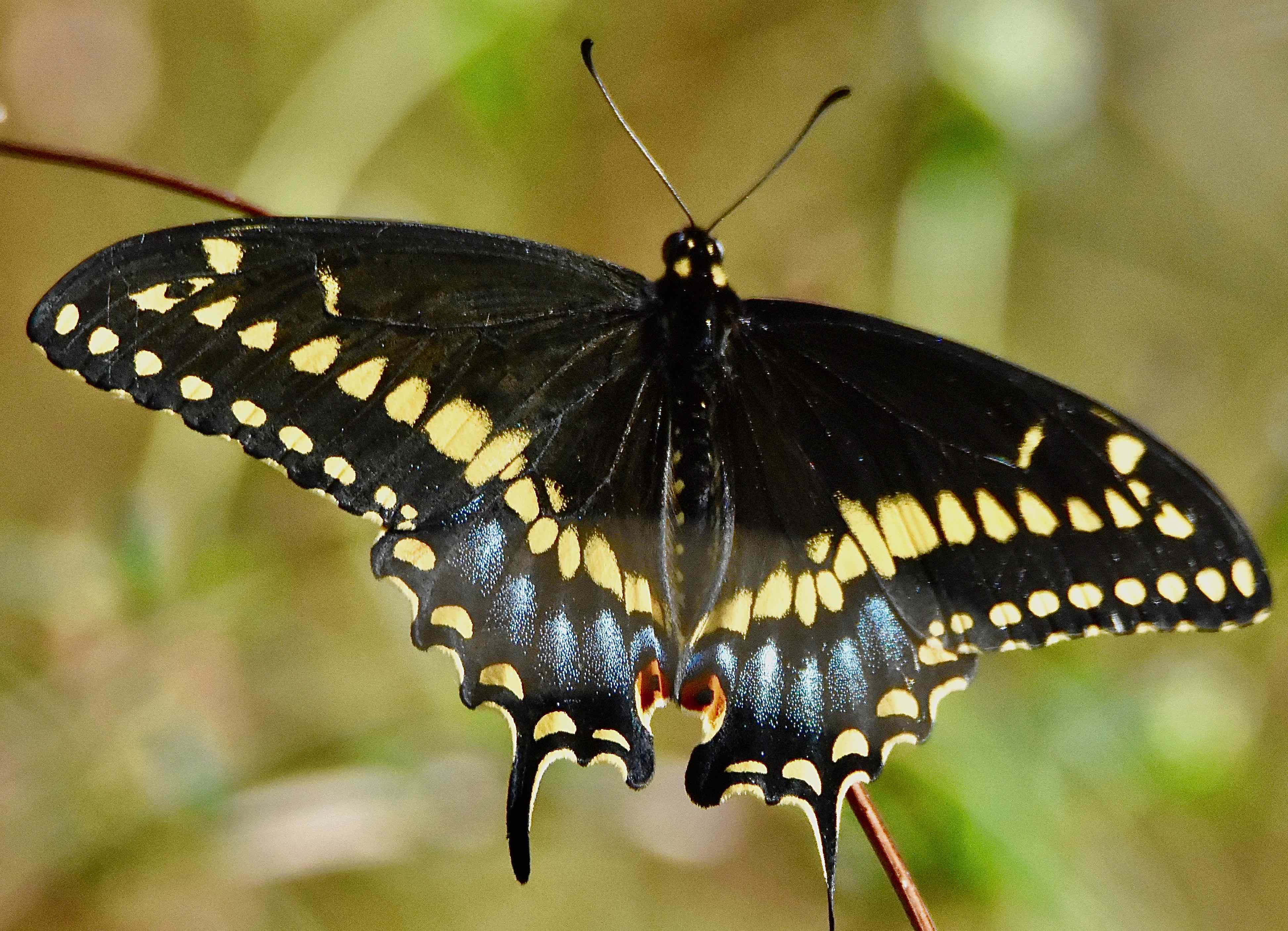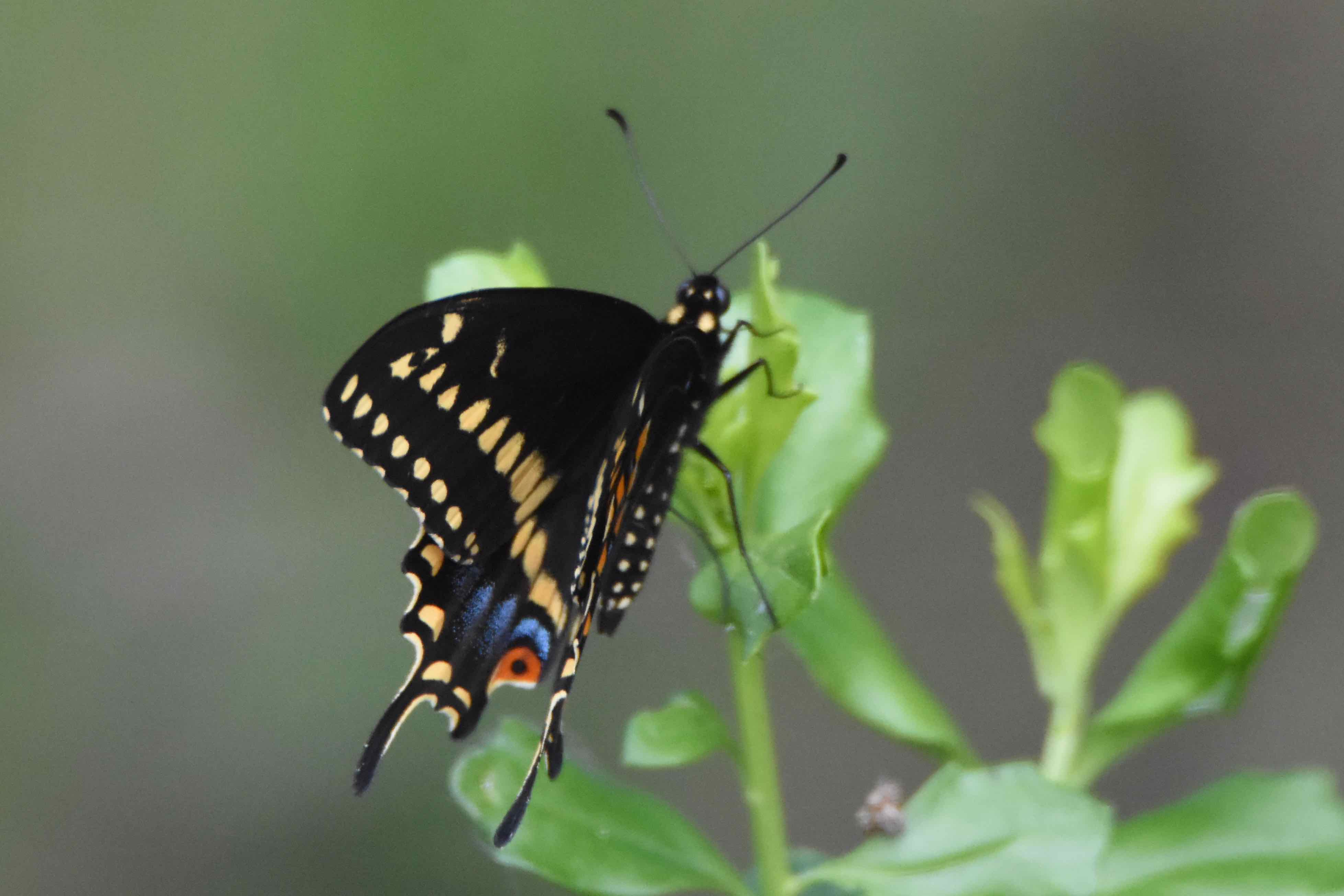
Palamedes swallowtail butterfly, photographed at Daggerwing Nature Center, Boca Raton, Palm Beach County, in July 2018.
We're not quite sure where the palamedes swallowtail, Papilio palamedes, gets its name. There are at least two figures named Palamedes in mythologies, one Greek (the Trojan War), the other from King Arthur and the Knights of the Round Table. To our limited knowledge, neither did anything to inspire the name of a butterfly.
Be that as it may, the palamedes swallowtail butterfly is commonly found in Florida, particularly near wet woods and swamps. It ranges along the Gulf/Atlantic coastal plain from Central Mexico to Virginia. It's been known to stray as far north as New York, as far west as Nebraska and as far south as Cuba, apparently unaware of the embargo.
It's a fairly large butterfly, with a wingspan that can exceed five inches. It is mostly black, with prominent yellow bands and spots. It also has some blue spots on the tail.
Up north, the palmedes swallowtail produces several generations, or flights, between May and September; in Florida, it's breeding season extends between March and December.
Members of the laurel family, particularly bays, are hosts plants for the palamedes swallowtail. Red bay is a favorite; sweet bay, not so much. Sweet bay is listed as a host, but in experiments, University of Florida researchers noted that palmedes swallowtail caterpillars won't touch the stuff.
According to Butterflies and Moths of North America, the palamedes swallowtail population is secure, but one writer in Central Florida notes a threat posed by a thing called the ambrosia beetle.
The beetle, an exotic import from Asia or Africa, won't harm the butterfly itself, of course, but it does carry a fungus that causes laurel wilt, which is deadly to red bay and other members of the laurel family. The palamedes butterfly is sort of like an unintended victim in a drive-by shooting. Without red bay for its offspring to munch on, it's in trouble as a species.
Exactly how the disease will affect the palamedes swallowtail is unclear from our research; the disease is deadly and it is spreading. The first infestation was detected in Georgia in 2002, and the disease has spread to South Carolina, Alabama and Florida, including South Florida. The good news is there seems to be a preventative, although it is expensive and might not be practical for widespread use.
Adult palamedes swallowtails have a more varied diet, nectaring on thistles, blue flag and other flowers.
The palamedes swallowtail butterfly is a member of papilionidae, the swallowtail family.



